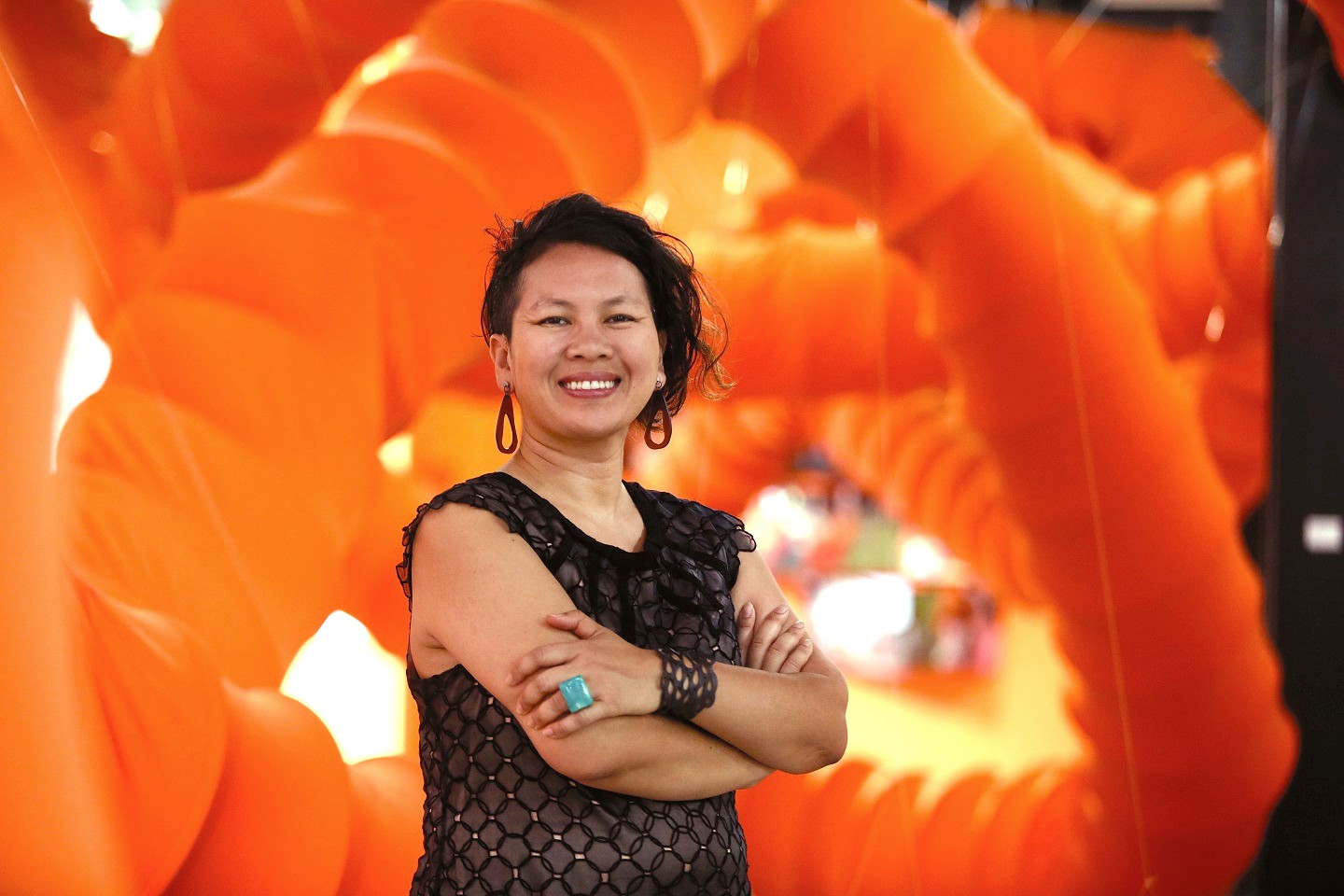
Anida Yoeu Ali is the woman behind the globally recognised orange Bug (Photo: Sam Fong/The Edge)
On several platforms, Anida Yoeu Ali introduces herself as a “global agitator”. Those around the world who have seen her as a slinky, bright orange “bug” would at least agree that her presence — all 100 feet of her at times — does not blend in.
As seen on the opening night of the exhibition of The Buddhist Bug: A Creation Mythology here in Kuala Lumpur — an ongoing artistic series that encompasses installation, live performance, photography and video art — Anida’s work also confounds, a hijab-wearing thing silently sought the attention of each person that walked past in Wei-Ling Contemporary.
“It may take a while, but I always see the same magical reaction, which is the suspension of disbelief. I may have shown pictures of the Bug before, or people watch at times as I sculpt her in place and as I work my way into becoming her, but once everything is done, that visceral reaction and sense of wonder is still there. Eventually, they are able to let their imaginations take over,” says Anida.
20190620_peo_anida_yeou_8_sam.jpg
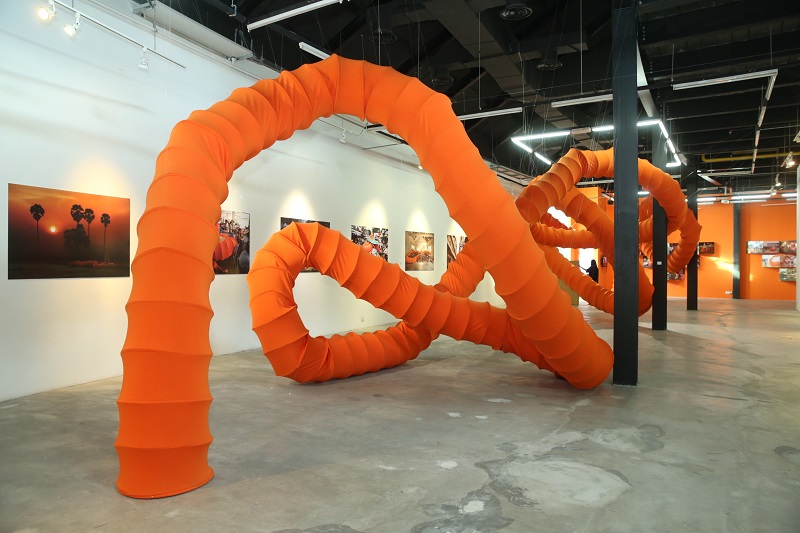
It is that live presence that makes the Buddhist Bug, though images of the mythical orange creature have equally fascinated and puzzled those who chance upon them all over the world. “When people want me to bring the Bug suit or loan it for an exhibition, my stipulation is that it has to come with the live element to activate it, and it must be open to the public. People have this idea about art, that it is to be seen from afar, not touched, and that it is elitist. But once people realise they have permission to interact, to get closer, it can become a powerful moment. The most natural and expressive are always the children, which I love,” says Anida.
Against the backdrop of the suit, now artfully suspended in the gallery space the day after, the artist shares how it all began, starting with her close ties to Malaysia. “I first came to Malaysia in 1992, my parents bought me a trip here as a high school graduation gift. Most of my dad’s side of the family is in Kota Bharu. He’s half Malay, half Cham. My mother has family in KL and Terengganu.”
Anida says she would love to take the Bug to Kota Bharu for its next globe-trotting chapter, though it would take a lot of resources and, probably, institutional support. “Preparation for each shoot takes weeks, involving back-and-forth visits to the communities and sites to share images and sketches with the locals, tell them my plans and ask for permission if needed. I always make sure I also buy enough iced coffee from the locals, for example, as I did in Cambodia.”
04-coconutroad-forpress_2k.jpg
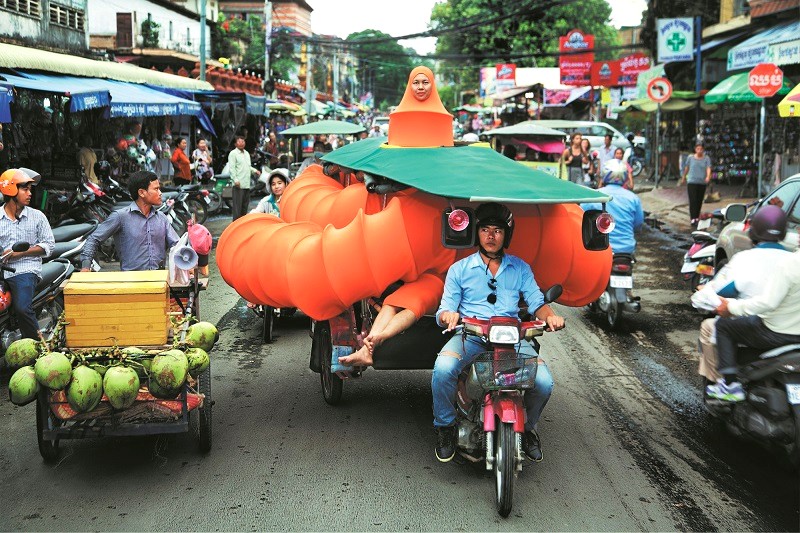
Her experience of returning to Cambodia is part of the reason why Anida is adamant that The Buddhist Bug — or for that matter most of her artistic practice — is rooted in public engagement. However, the inspiration behind it is definitely personal.
It was sparked when the artist first returned to Cambodia in 2009, some 30 years after fleeing with her family at age five. Being a minority Cambodian Muslim, she recounts her fascination at discovering just how Buddhist the country is, and she was especially captivated by the Buddhist monks and their ubiquitous orange robes.
“It also made me realise that my family must have struggled being part of a religious minority. The idea of the form of the Bug represents them, this large entity wrapped in saffron but modelled after a hijab and a modest form of dress. So the creature itself is a hybrid,” explains Anida.
The work fully took off in 2011, when she moved to Cambodia for a few years on the Fulbright Fellowship programme to research creation mythologies. While there, she also came into contact with the Cambodian arts community and saw how removed from the locals it was.
06-reflection1-forpress.jpg
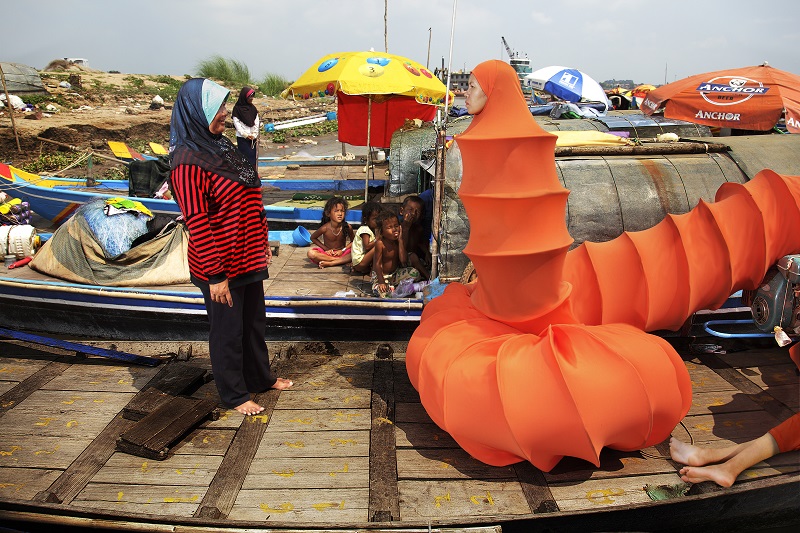
This gives context to the photographs on show, most of which are from her initial photo shoots in Cambodia, showing her in various settings that are almost comically jarring. In a Cambodian classroom, the Bug coils itself around the students’ desks as some of them stare at this alien inhabiting their space. In another, she rides on a busy street in a cargo tricycle, her bare feet dangling casually alongside her bemused chauffeur. Be it on a river boat, or staring down locals on the street — the expressions of those who happen upon her are most illuminating.
For every curious eye, there have been a fair share of condemning ones. During the project’s run in Singapore, Anida did a public performance in front of the Sultan Mosque. “An elderly man pointed at me, gesturing angrily, yelling heated words in Malay. All I could hear was haram this and haram that…” she recounts.
The memory sums up both what has challenged the artist her entire life and what the Bug represents in the bigger picture — belonging and displacement. She cites a long list: “Being transnational, being Muslim (or not Muslim enough), being a woman, an ethnic minority, a female artist on top of that and being a mother as well…”
Like the long, collapsible Bug suit — which is both bright and present, yet silent and stoic; structured, yet fluid; the essence of duality — and all the agitation it creates for those around her has followed Anida as closely as the Bug has.
20190620_peo_anida_yeou_6_sam.jpg
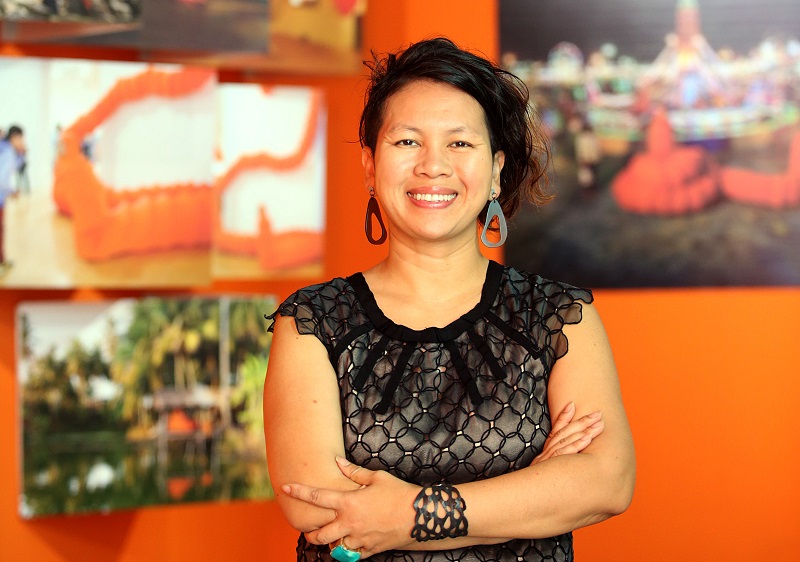
It echoes especially in the current political climate, rife with issues like the refugee crisis and rising nationalism. The question of identity is, suffice to say, a perilous one to answer. Anida sits contemplatively as she responds, “I am saying you don’t have to pick. It is too easy to just pick. If you really think about the history of civilisation and people, we did not just get here. We got here because, from the beginning of time, people migrated. In fact, we are all mixed. I want to celebrate all the nuances of that.
“Every society has struggled to be who they are. Every single sub-group has come as a result of mixing, of questioning who they are, struggling with their identity and belonging. It is not fair for these same communities to then take this attitude towards others now, simply because they are in a certain political moment. Besides, is it quantifiable to measure how Khmer somebody is, or how American they are, or how Malaysian?” she says.
At the root of it is fear, she adds, one that is global no less. “We are afraid of what we don’t know. We are collectively empowered to make things better, but we are slowed down by our own laws and fears — sometimes these laws express the fears.”
On the response of people to the Buddhist Bug, or even to her other infamous series, The Red Chador, Anida quotes her friend, Native American artist Gregg Deal: “We have a phrase in common, and that is ‘existence as protest’”.
“I fully embrace that for me to exist, a lot of people have had to suffer. My parents survived genocide … I cannot take that for granted, that my existence means I have something to say, something to share with the world, and I am not going to apologise for being who I am.”
And so, the Bug continues to wander, destined to travel and explore, to claim a place of existence in between realities.
'The Buddhist Bug: A Creation Mythology'is showing until Aug 18 at Wei-Ling Contemporary, The Gardens Mall, Kuala Lumpur. Admission is free. Opening hours are 11am to 7pm (Tues-Sun). Call 03 2282 8323 for more details or see here.
This article first appeared on July 22, 2019 in The Edge Malaysia.


